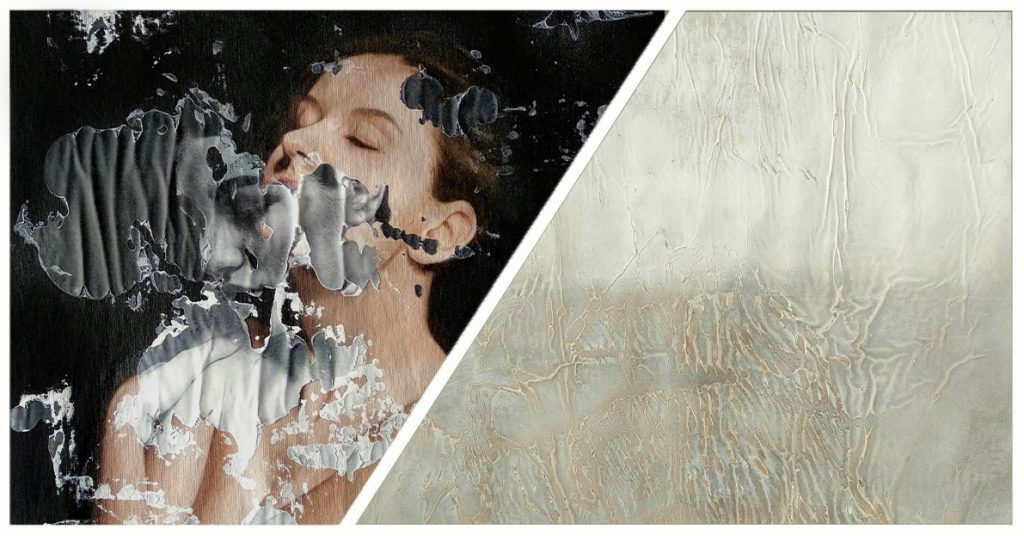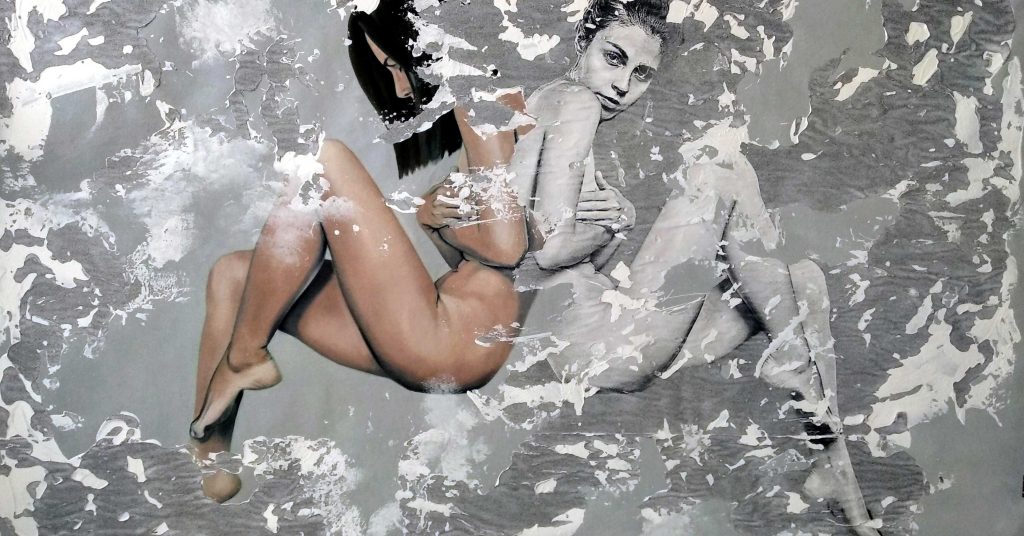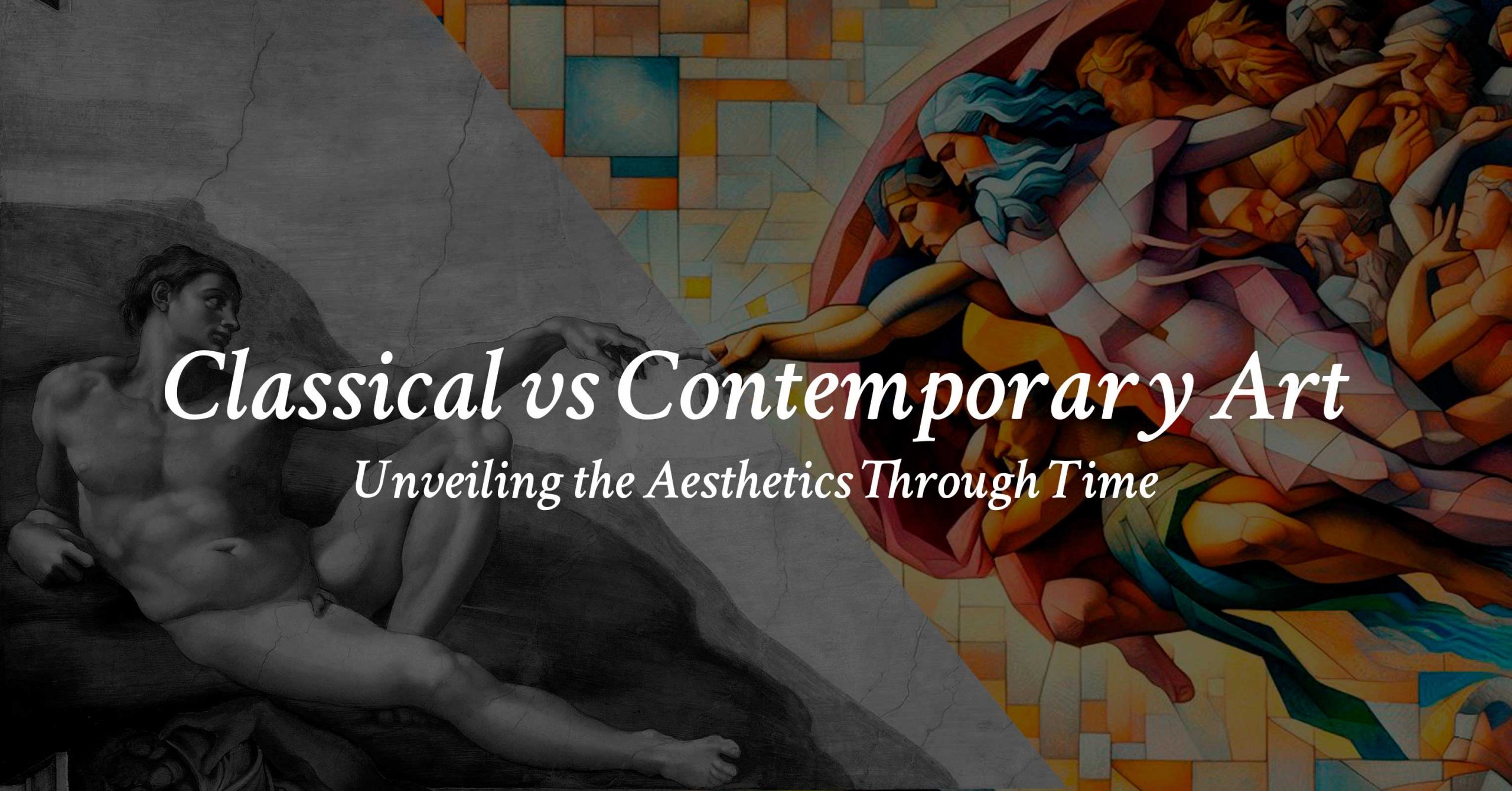
- Introduction
- Classical Art: A Legacy of Timeless Elegance
- Contemporary Art: A Canvas of Innovation
- Delving into the Aesthetics of Classical and Contemporary Art
- Classical vs Contemporary Art: A Comparative Analysis
- Neophotorealism: Bridging the Gap Between Classical and Contemporary Art
- Engaging Audiences with Classical and Contemporary Art
- Navigating Art Appreciation: A Practical Guide
- Conclusion: Bridging the Gap
- FAQs
Introduction
The realm of art is an expansive and continually evolving terrain, embracing a multitude of styles, techniques, and mediums that have enthralled artists and audiences throughout the ages. Within this vast panorama, two prominent and impactful art movements come to the forefront: Classic Art and Contemporary Art. Despite their seemingly disparate nature, the interplay between these two genres creates a profound connection, with Classical vs Contemporary Art engaging in an ongoing dialogue that mirrors the dynamic shifts in human expression over time.
Classical Art: A Legacy of Timeless Elegance
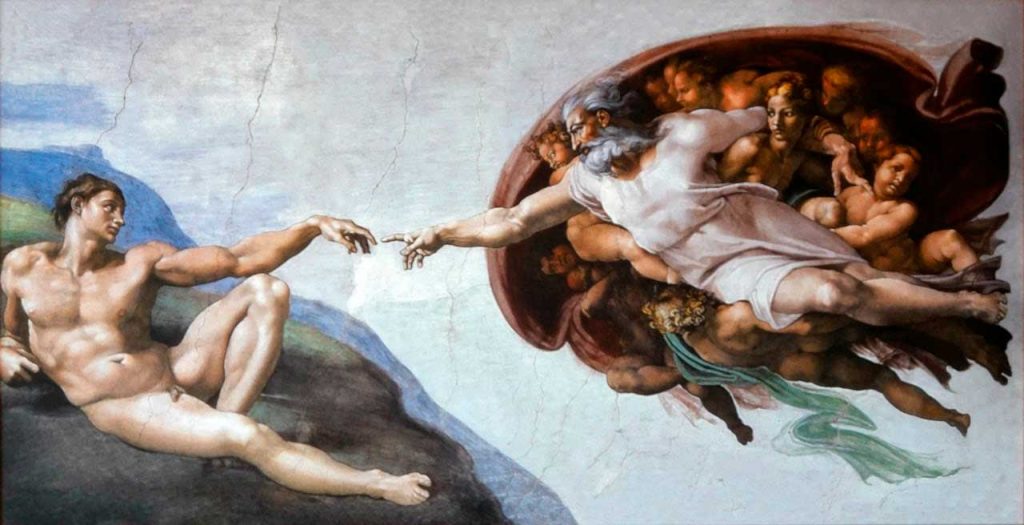

Classical art, rooted in the rich civilizations of ancient Greece and Rome, has captivated audiences for millennia with its idealized beauty, harmonious compositions, and profound storytelling. It stands as a testament to the enduring power of human creativity and the pursuit of perfection in artistic expression.
Defining Classical Art
Classical art is characterized by several key principles that distinguish it from other artistic movements:
- Realism: Classical artists strived to capture the essence of the human form and the natural world with meticulous attention to detail and anatomical accuracy. They aimed to create works that reflected the ideal beauty of the human body and the harmony of the natural world.
- Harmony: Classical compositions are characterized by balance, symmetry, and a sense of overall unity. The placement of figures, the use of light and shadow, and the arrangement of elements within the composition all contribute to a sense of visual harmony.
- Proportion: Classical artists believed in the concept of the Golden Ratio, a mathematical relationship that was considered to be the essence of beauty and proportion. They applied this principle to their sculptures, paintings, and architecture, creating works that were aesthetically pleasing and visually balanced.
Renowned Classical Artists
Numerous renowned artists have made significant contributions to the development of classical art, including:
- Phidias (500-432 BCE): Regarded as the greatest sculptor of ancient Greece, Phidias’ masterpieces, such as the Parthenon sculptures and the Zeus statue at Olympia, epitomize the ideals of classical art.
- Michelangelo (1475-1564): An Italian Renaissance polymath, Michelangelo’s artistic genius is evident in his sculptures, paintings, and architectural designs. His iconic works, such as the Sistine Chapel ceiling and the David statue, embody the classical principles of harmony, proportion, and idealized beauty.
- Rafael (1483-1520): Another Italian Renaissance master, Raphael’s paintings are renowned for their grace, elegance, and harmonious compositions. His masterpieces, such as the School of Athens and the Madonna of the Meadow, illustrate the classical emphasis on realism and idealized beauty.
Aesthetics of Classical Art
Classical art is characterized by a focus on realism, harmony, and proportion, which are evident in its depiction of the human form, composition, and use of color.
- Realistic Depiction of the Human Form: Classical artists were highly skilled in capturing the anatomical accuracy and beauty of the human form. They paid close attention to details such as musculature, facial expressions, and gestures to create figures that were both lifelike and idealized.
- Harmonious Compositions: Classical compositions are typically balanced, symmetrical, and visually appealing. The placement of figures, the use of light and shadow, and the arrangement of elements within the composition all contribute to a sense of overall unity and harmony.
- Proportion and Idealized Beauty: Classical artists believed in the existence of an ideal human form, characterized by balanced proportions and harmonious proportions. They used mathematical principles such as the Golden Ratio to guide their compositions and create works that embodied idealized beauty.
Narrative and Storytelling in Classical Masterpieces
Classical art often serves as a form of storytelling, employing narrative techniques to convey emotions, ideas, and historical events. Artists often drew inspiration from mythology, literature, and historical narratives to create works that were both visually appealing and intellectually stimulating.
- Mythological Scenes: Classical artists frequently depicted scenes from Greek and Roman mythology, such as the Trojan War, the Odyssey, and the life of Hercules. These mythological narratives provided a rich source of material for storytelling and allowed artists to explore themes of heroism, love, and conflict.
- Historical Allegories: Artists also drew inspiration from historical events, often using allegory to convey messages about political power, social commentary, and the human condition. For instance, Phidias’ Parthenon sculptures represented the Athenian victory over the Persians, while Michelangelo’s Sistine Chapel ceiling portrays the creation of the universe.
Classical art remains relevant and captivating today because of its enduring aesthetic beauty, its profound storytelling, and its ability to reflect the human experience across time. The principles of realism, harmony, and proportion that underpin classical art continue to inspire artists and captivate audiences, making it a cornerstone of Western art history.
Contemporary Art: A Canvas of Innovation
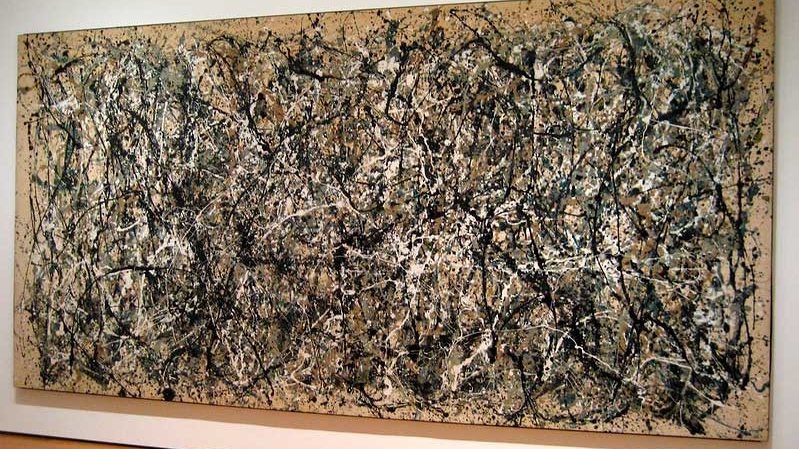

Contemporary art, a dynamic and ever-evolving movement, stands as a testament to the boundless creativity of humankind. It defies categorization, embracing a kaleidoscope of styles, mediums, and techniques, challenging the very essence of what art can be. From the abstract expressionism of Jackson Pollock to the conceptual art of Marcel Duchamp, contemporary art has consistently pushed the boundaries of artistic expression.
Defining Contemporary Art: A Departure from Tradition
Contemporary art emerged in the 20th century, marked by a radical departure from traditional artistic norms. It broke free from the constraints of realism, embracing abstraction, distortion, and unconventional materials. Contemporary artists sought to challenge established notions of beauty and to reflect the complexities of the modern world.
Influential Contemporary Artists and Their Impact
The history of contemporary art is rich with groundbreaking artists who have transformed the landscape of art. Jackson Pollock, with his iconic drip paintings, revolutionized the medium of painting. Andy Warhol, with his Pop Art, brought everyday objects into the realm of fine art, challenging the boundaries between high and low culture. Marcel Duchamp, with his readymades, questioned the very definition of art, blurring the lines between art and everyday objects. These artists, and many others, have left an indelible mark on contemporary art, inspiring generations of artists to experiment, innovate, and challenge the conventions of artmaking.
Diverse Aesthetics of Contemporary Art: A Tapestry of Expression
Contemporary art is characterized by its diversity, embracing a wide range of styles, mediums, and techniques. From the abstract expressionism of Wassily Kandinsky to the performance art of Marina Abramović, contemporary artists explore a vast array of possibilities, pushing the boundaries of artistic expression.
Emphasis on Individual Expression and Experimentation
Central to contemporary art is the emphasis on individual expression and experimentation. Contemporary artists are free to explore their own unique visions and techniques, unbound by traditional rules and expectations. This spirit of experimentation has led to the creation of a vast and ever-evolving body of work that reflects the diversity and creativity of the human experience.
Contemporary art, with its boundless creativity and relentless exploration, continues to captivate and inspire audiences worldwide. It is a testament to the power of art to challenge, provoke thought, and reflect the ever-evolving human experience. As contemporary art continues to evolve, we can expect to see even more groundbreaking innovations and expressions that will shape the future of art.
Delving into the Aesthetics of Classical and Contemporary Art
Classical Art: Beauty and Harmony
Classical art, with its focus on realism, sought to capture the essence of the human form and the natural world. Artists strived to create balanced and harmonious compositions, emphasizing the proportions and ideals of the human body. This emphasis on realism was not merely a representation of the physical world but rather an attempt to convey a sense of idealized beauty and perfection.
Contemporary Art: A Spectrum of Expressions
Contemporary art, on the other hand, embraces a wide spectrum of aesthetics, often challenging the very notion of beauty. It blurs the lines between traditional art forms, incorporating elements of everyday life, pop culture, and technology. Contemporary artists explore diverse styles, from the abstract expressionism of Jackson Pollock to the conceptual art of Marcel Duchamp, seeking to provoke thought and challenge perceptions.
Classical vs Contemporary Art: A Comparative Analysis
Classical and contemporary art, despite their apparent differences, represent two distinct yet interconnected chapters in the grand narrative of human artistic expression. While classical art embodies the timeless beauty and harmony of established traditions, contemporary art embraces the spirit of innovation and experimentation, pushing the boundaries of artistic expression. This article delves into the contrasting elements of these two art movements, examining their approaches to representation, materiality, and storytelling. We’ll explore how technology and societal changes have shaped their evolution, and how classical art continues to influence contemporary artists, creating a dynamic dialogue between tradition and innovation. Join us as we journey through the contrasting aesthetics of classical and contemporary art, uncovering the rich tapestry of human creativity and the enduring power of art to reflect and shape our world.
Classical Art vs Contemporary Art Comparative Table
| Aspect | CLASSICAL ART | CONTEMPORARY ART |
| Time Period | Ancient Greece to the 19th century | Late 19th century to the present day |
| Mediums | Oil painting, sculpture, architecture | Video, performance, installation art, Digital art, mixed media |
| Aesthetics | Realism, idealism, harmony, proportion | Diverse styles, often abstract, subjective, and experimental |
| Storytelling | Often narrative, historical references | Abstract and personal themes, less emphasis on linear storytelling |
| Techniques | Detailed and precise craftsmanship | Emphasis on concept, often non-traditional and boundary-pushing |
| Technology Influence | Limited technological influence | Embraces technology for immersive experiences, digital art |
| Audience | Elite patrons, religious institutions | More accessible, diverse audience, engagement through social media |
| Influences | Greco-Roman, Renaissance, Neoclassicism | Pop art, minimalism, conceptual art, Postmodernism |
| Purpose | Reflects societal ideals, storytelling | Challenges conventions, explores individual expression and societal issues |
Contrasting Elements
The contrast between classical and contemporary art is evident in their approach to representation, materiality, and storytelling. Classical art employed traditional techniques like oil painting, sculpture, and architecture, while contemporary art embraced innovative mediums like video, performance, and installation art. In storytelling, classical art often relied on narratives and historical references, while contemporary art often explored more abstract and personal themes.
Technology and Societal Changes
The rise of digital technology and the rapid pace of social change have undoubtedly shaped the evolution of contemporary art. Artists have embraced technology to create immersive experiences, challenge traditional notions of authorship, and engage with global audiences. Contemporary art also reflects the social and political upheavals of our time, often addressing issues of identity, gender, and the environment.
Artistic Influences Over Time
While classical art might seem like a distant chapter in history, its influence on contemporary art is undeniable. Classical motifs, techniques, and ideals continue to inspire contemporary artists, providing a foundation for experimentation and reinterpretation. The cyclical nature of art movements is evident in this interplay between tradition and innovation, as artists constantly re-examine and re-interpret the art of the past.
Neophotorealism: Bridging the Gap Between Classical and Contemporary Art
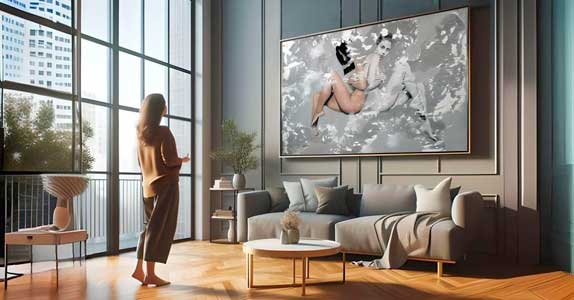

In the ongoing discourse of classical vs contemporary art, the emergence of neophotorealism stands as a remarkable innovation that seamlessly blends the traditional techniques of classical art with the modern sensibilities of contemporary art. Spearheaded by artist Raúl Lara, neophotorealism has revolutionized the realm of figurative expressionism, creating a unique fusion that captivates art enthusiasts worldwide.
Raúl Lara’s neophotorealism technique takes this tradition a step further, introducing photography as a transformative medium. By employing image transfer, Lara seamlessly blends photographs with traditional oil painting, capturing the hyper-realism of photography while retaining the expressive brushwork and depth of color associated with oil painting. This innovative approach allows Lara to achieve a level of realism that is unparalleled in classical art, while simultaneously imbuing his works with a contemporary vibrancy and dynamism.
The result is a captivating hybrid of styles, where the meticulously rendered details of the photographs coexist with the expressive brushwork and heightened emotionality of oil painting. Lara’s neophotorealism breathes new life into figurative expressionism, allowing him to explore the human form with an unprecedented level of depth and nuance.
Lara’s fascination with the female figure is particularly evident in his neophotorealist works. His paintings portray women with a raw sensuality and emotional vulnerability, capturing their essence with a level of intimacy that is both captivating and thought-provoking.
Neophotorealism, pioneered by Raúl Lara, has emerged as a powerful tool for bridging the gap between classical and contemporary art, offering a unique perspective on the human form and the power of artistic expression. By seamlessly blending photography with traditional oil painting, Lara has created a new vocabulary of imagery that both honors the past and embraces the present, reaffirming the enduring relevance of figurative expressionism in the ever-evolving world of art.
-


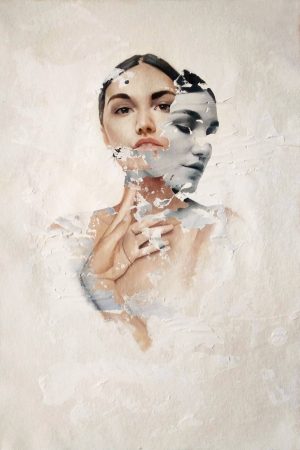 Fracti III1.659,00 €
Fracti III1.659,00 € -


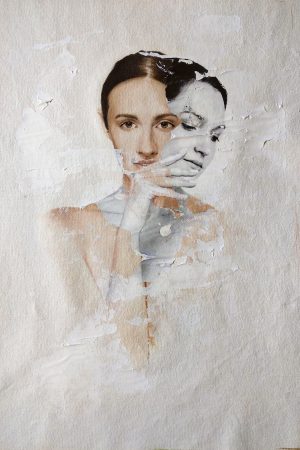 Fracti II1.659,00 €
Fracti II1.659,00 € -


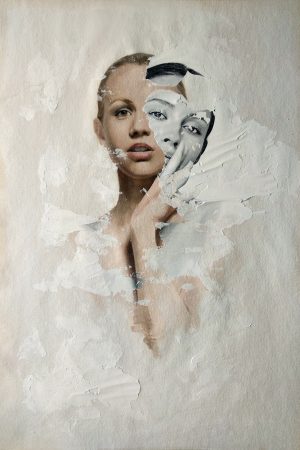 Fracti1.659,00 €
Fracti1.659,00 €
Engaging Audiences with Classical and Contemporary Art
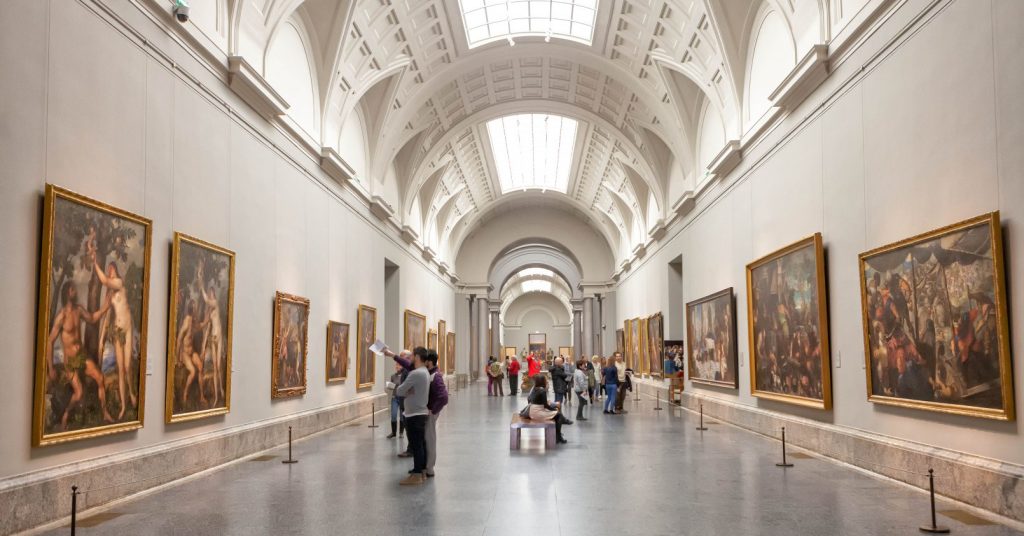

The enduring allure of classical art, often the subject of debate in the classical vs contemporary art conversation, stems from its remarkable ability to transcend temporal and cultural boundaries. Across generations, classical art captivates audiences with its idealized beauty, harmonious compositions, and profound storytelling. Rooted in ancient civilizations, classical art addresses a universal human longing for beauty, harmony, and enduring narratives. Traditional venues such as museums and galleries have traditionally served as the primary spaces for engaging with classical art, providing a tangible and immersive experience that allows viewers to forge a profound connection with the works.
In contrast, contemporary art, marked by its penchant for experimentation, innovation, and unconventional forms and concepts, has seamlessly integrated into the digital age. In this classical vs contemporary art discourse, online platforms, social media, and interactive experiences have become potent instruments for linking contemporary art with modern audiences, dismantling geographical barriers and cultivating a global conversation about art. The dynamic engagement of contemporary art with social and cultural issues resonates with diverse audiences, prompting them to ponder their own experiences and perspectives in the ever-evolving landscape of artistic expression.
Classical Art’s Enduring Appeal: Target Audience and Appreciation
The appeal of classical art extends across generations, cultures, and demographics. Its timeless beauty and universal themes resonate with audiences worldwide. Museums and galleries, with their carefully curated collections and knowledgeable curators, provide a structured environment for appreciating classical art. Guided tours, educational programs, and immersive exhibitions further enhance the audience’s understanding and appreciation of classical art.
Contemporary Art’s Connection with Modern Audiences:
Contemporary art, with its dynamic and ever-evolving nature, connects with modern audiences through its engagement with current social, cultural, and political issues. Online platforms, social media, and interactive experiences have become indispensable tools for disseminating contemporary art and fostering a dialogue between artists, audiences, and the art world. Interactive installations, virtual reality experiences, and online exhibitions allow audiences to engage with contemporary art in new and innovative ways.
Breaking Down Barriers for Diverse Audiences
Classical art institutions are increasingly incorporating interactive technologies, multimedia experiences, and educational programming to attract a wider audience beyond the traditional art enthusiast. Online platforms, social media, and virtual tours have enabled access to classical art for audiences worldwide, regardless of their location or physical accessibility.
Contemporary art, with its focus on social and cultural commentary, has the potential to connect with diverse audiences and spark important conversations about contemporary issues. By addressing themes such as identity, gender, and social justice, contemporary art can challenge perceptions and foster empathy among viewers.
Navigating the dynamics of classical and contemporary art requires a nuanced understanding of their respective audiences and the unique ways they engage with art. Classical art’s enduring appeal lies in its timeless beauty and universal themes, while contemporary art’s connection with modern audiences is rooted in its exploration of contemporary social and cultural issues. By embracing both traditional and innovative approaches, art institutions can engage a wider audience and ensure that the power of art continues to inspire and connect across time and cultures.
Navigating Art Appreciation: A Practical Guide
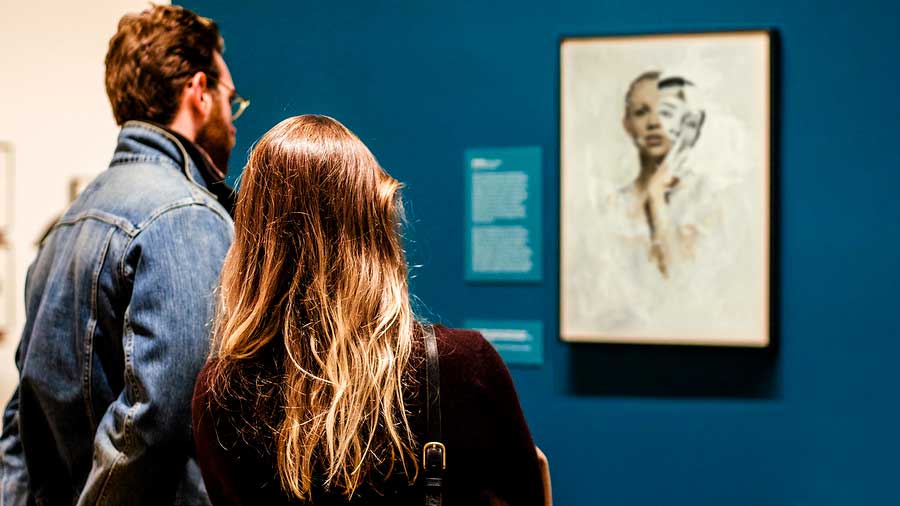

Embarking on the journey of art appreciation, which encompasses a thoughtful exploration of classical vs contemporary art, involves navigating the distinct realms of the rich tapestry of artistic expression.
Appreciating Classical Art
To fully appreciate classical art, consider visiting museums and galleries with guided tours. Engage with docents and experts who can provide insights into the historical context, artistic techniques, and cultural significance of the artworks. Research the biographies of prominent artists and their contributions to the classical tradition.
Engaging with Contemporary Art
Participate in local art events, performances, and exhibitions. Attend artist talks and discussions to gain insights into the artist’s intentions and the themes explored in their work. Explore online resources, such as artist websites, blogs, and social media, to broaden your understanding of contemporary art trends and movements.
Fostering a Lifelong Appreciation of Art
Develop a habit of regularly visiting art museums and galleries, even if it’s just for a short time. Engage with the artworks, ask yourself questions about the techniques, symbolism, and emotions conveyed. Discuss art with friends, family, and colleagues to share different perspectives and interpretations.
Conclusion: Bridging the Gap
In the ongoing discourse of classical vs contemporary art, it becomes evident that classical and contemporary art, despite their apparent differences, share a common thread — the pursuit of creativity, self-expression, and the exploration of human experience. While classical art offers timeless beauty, harmony, and narrative, contemporary art challenges conventions, embraces experimentation, and reflects the dynamic nature of our world.
The key to appreciating both classical and contemporary art lies in recognizing their unique contributions to the ever-evolving landscape of artistic expression. Embracing the diverse perspectives and techniques employed by artists across time periods allows us to develop a more comprehensive understanding of the art world and its ability to capture and convey the essence of human experience.
FAQs
- What are the key characteristics of classical art?
Classical art is characterized by its emphasis on realism, harmony, and proportion. It often depicts idealized figures in balanced compositions and idealized settings.
- What are the defining characteristics of contemporary art?
Contemporary art is characterized by its departure from traditional artistic conventions and its embrace of experimentation. It often explores new mediums, techniques, and forms of expression.
- How has technology influenced the evolution of art?
Technology has played a significant role in the evolution of both classical and contemporary art. In contemporary art, technology has been used to create immersive experiences, challenge traditional notions of authorship, and engage with global audiences.
- What are the enduring appeals of classical art?
Classical art continues to appeal to audiences worldwide due to its timeless beauty, technical mastery, and historical significance.
- How can people better connect with contemporary art?
People can better connect with contemporary art by participating in local art events, engaging in discussions about contemporary art, and exploring online resources and artist interviews.

